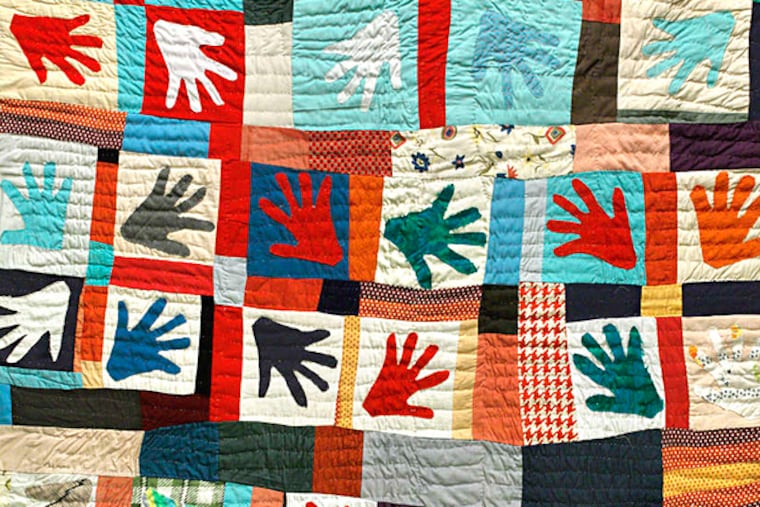Edit-athon aims to put left-out black artists into Wikipedia
If you're trying to measure an artist's notability, one gauge is whether his or her work is owned by a major institution such as, say, the Philadelphia Museum of Art.

If you're trying to measure an artist's notability, one gauge is whether his or her work is owned by a major institution such as, say, the Philadelphia Museum of Art.
Yet, of the 50 or so notable artists featured in the museum's exhibition "Represent: 200 Years of African American Art," only five or six have comprehensive entries on Wikipedia, a site that has become, for many, the de facto first stop for information on almost any topic.
Twenty-seven have no entry at all, according to museum staff.
It's a symptom, they say, of a broader systemic bias within the user-edited encyclopedia, where 90 percent of editors are male, and minorities are significantly underrepresented.
On Wednesday night, researchers, art historians, students, and the general public will be invited to help rectify that at the museum's first-ever Wikipedia Edit-athon.
Such events have been popping up with increasing frequency over the last few years in and around Philadelphia. The subject-specific events are designed to train amateur editors and encourage them to create and expand entries on overlooked topics.
Some are organized by libraries, galleries, and universities that increasingly view Wikipedia-editing as part of their mission. Others are spearheaded by editor-activists who recognize the importance of bringing different perspectives to this collective repository of knowledge.
"They're doing this because they want people from those communities to take control over their own history and say, 'This is what happened. This is what's important,' and not leave it to somebody else to decide that," said Mary Mark Ockerbloom, who works for the Chemical Heritage Foundation as their Wikipedian in Residence, making her, she believes, the city's only professional, full-time Wikipedia editor.
Recently, gender bias, in particular, has received significant attention from critics - such as when a number of female authors on Wikipedia were relegated from the category "American Novelists" to merely "American Women Novelists." A study published this year found that entries about women were significantly more likely to discuss romantic relationships or family issues.
The Wikimedia Foundation is offering $250,000 in grants for initiatives to help close the gender gap.
And such efforts can have a real impact: Art+Feminism, a group that held its second annual edit-athon earlier this month at the Museum of Modern Art in New York and 75 satellite locations, reported that the events resulted in 400 new entries and 500 significantly improved ones.
Charlotte Lowrey, a project assistant at the Philadelphia Museum of Art, said the Art+Feminism events inspired her to suggest an edit-athon in conjunction with "Represent."
"I thought that it would match beautifully with this initiative to bring new artists to light on Wikipedia that are underrepresented," she said.
The edit-athon, from 5:30 p.m. to 8:30 p.m., is part of the museum's pay-what-you-wish Wednesday night programming. Walk-ins are welcome. Participants are asked to bring their own computers, if possible, and to create a Wikipedia account in advance.
John Vick, the organizing curator of the exhibition, said the museum will provide reference materials, and suggest topics for research. His to-do list includes new or improved entries for artists such as Horace Pippin, Barkley Hendricks, and Allan Randall Freelon.
Ockerbloom, who has been working on an entry for Philadelphia artist Ellen Powell Tiberino, will run a training session for new editors, introducing them to using the site, writing in Wikipedia-accepted style, and providing citations for their work.
"I like to tell people, 'Let the facts tell the story,' " she said.
This may be a form of activism, but, she cautions, it's not about rewriting history or even putting a spin on it. The goal is simply to provide information, so that minority perspectives aren't muted.
These may be small, incremental improvements, but they could have ripple effects, said Sara MacDonald, a public-services librarian at the University of the Arts, who organized a local version of the Art+Feminism edit-athon a few weeks ago.
"It's quite well-known, this leaving women out of art history. And it does take a long time to correct, the way scholarship works, through citation and being able to find documentation," she said. Providing those citations now can make a big difference going forward.
Sarah Gantt, a senior at the university who helped MacDonald organize the event, said she found it empowering.
She had been shocked at the disparities - to find, for example, that the entry for painter Lee Krasner contained not one image of her or her paintings (though it does include photos of her home and her burial place, both shared with her husband, Jackson Pollock).
"I'd never thought of it before. I just expected that women would be represented equally," she said. "But when you go on and look at the pages, it's sort of unbelievable, the comparison."
Ockerbloom, who got into Wikipedia editing while building an online database of female writers, said more institutions - even ones that, in the past, may have stigmatized Wikipedia as a research source - are now recognizing the value of editing. For example, she ran a workshop recently for the Small Museum Association conference in New Jersey.
"That community is seeing this as a really potentially impactful way to share what they have, and that's really their mandate," she said.
If Wednesday's edit-athon goes well, the Philadelphia Museum of Art may run similar events in the future.
As for the works by African American artists featured in "Represent," many will go back into storage after the show closes on April 5. But not all will, Vick said.
"We plan to do more with this collection, but the specifics of it are still being discussed," he added.
Even if the works go back into storage, the Wikipedia entries will remain.
215-854-5053
@samanthamelamed